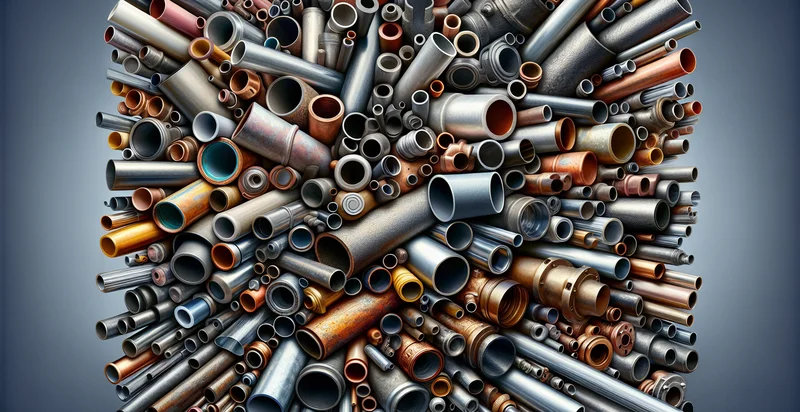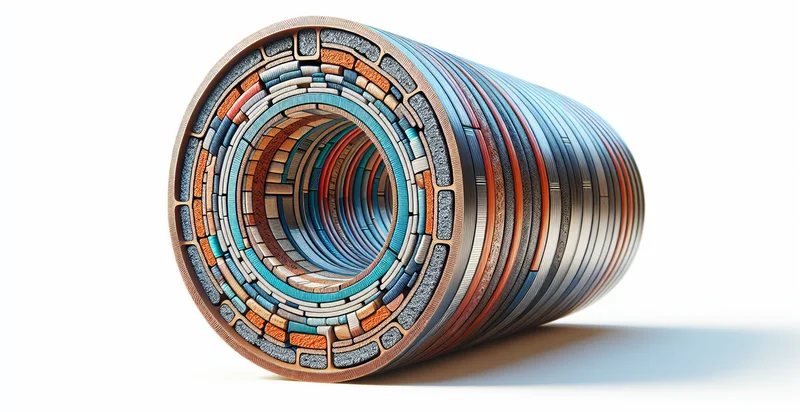Identify pipe material
using AI
Below is a free classifier to identify pipe material. Just upload your image, and our AI will predict what type of pipe material it is - in just seconds.

Contact us for API access
Or, use Nyckel to build highly-accurate custom classifiers in just minutes. No PhD required.
Get started
import nyckel
credentials = nyckel.Credentials("YOUR_CLIENT_ID", "YOUR_CLIENT_SECRET")
nyckel.invoke("pipe-material", "your_image_url", credentials)
fetch('https://www.nyckel.com/v1/functions/pipe-material/invoke', {
method: 'POST',
headers: {
'Authorization': 'Bearer ' + 'YOUR_BEARER_TOKEN',
'Content-Type': 'application/json',
},
body: JSON.stringify(
{"data": "your_image_url"}
)
})
.then(response => response.json())
.then(data => console.log(data));
curl -X POST \
-H "Content-Type: application/json" \
-H "Authorization: Bearer YOUR_BEARER_TOKEN" \
-d '{"data": "your_image_url"}' \
https://www.nyckel.com/v1/functions/pipe-material/invoke
How this classifier works
To start, upload your image. Our AI tool will then predict what type of pipe material it is.
This pretrained image model uses a Nyckel-created dataset and has 16 labels, including Aluminum, Brass, Cast Iron, Ceramic, Composite, Concrete, Copper, Cpvc, Fiber Reinforced Plastic and Galvanized Steel.
We'll also show a confidence score (the higher the number, the more confident the AI model is around what type of pipe material it is).
Whether you're just curious or building pipe material detection into your application, we hope our classifier proves helpful.
Related Classifiers
Need to identify pipe material at scale?
Get API or Zapier access to this classifier for free. It's perfect for:
- Material Quality Inspection: This use case involves utilizing the pipe material identifier to automatically classify the materials used in a series of pipes during manufacturing. By quickly identifying the material, manufacturers can ensure quality control and compliance with industry standards, reducing the chances of defects.
- Inventory Management: Companies in the plumbing or construction industries can use the identifier to analyze their stock of pipes. By accurately categorizing pipe materials, businesses can better manage their inventory levels, streamline reordering processes, and reduce unnecessary costs.
- Project Estimation and Costing: Construction firms can leverage the pipe material identifier to classify materials in project proposals. This identification will help in generating accurate cost estimates based on the specific materials required, leading to improved budgeting and financial planning.
- Safety Compliance Verification: In industries where pipe safety is paramount, the identifier can ensure that only approved materials are used in pipeline construction. It can help companies verify that materials comply with safety regulations, thereby reducing risks and enhancing workplace safety.
- Environmental Impact Assessments: Environmental agencies can utilize the identifier to analyze the materials in pipes during assessments. By classifying the pipe materials, assessments of environmental impacts and compliance with sustainable practices can be performed more effectively.
- Maintenance Planning: Utility companies can apply the pipe material identifier during pipeline inspections to determine the longevity and durability of existing pipes. This classification allows for proactive maintenance planning, helping to prevent leaks or ruptures that could lead to costly repairs.
- Supplier Quality Assurance: Businesses can use the identifier in supplier audits to ensure they receive the correct pipe materials as specified in contracts. Verifying material types can help improve supplier relationships and reduce the potential for disputes related to product quality or compliance issues.


